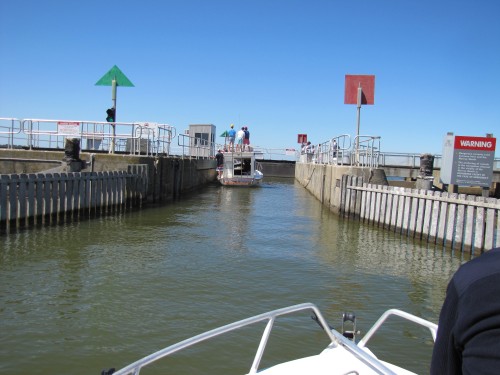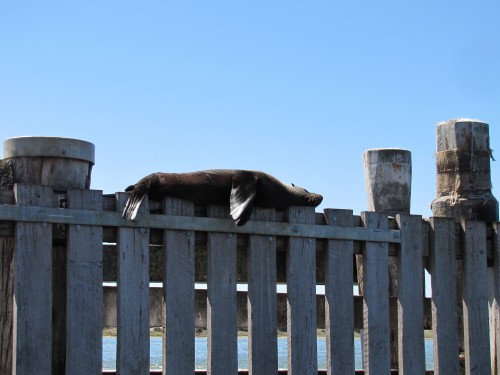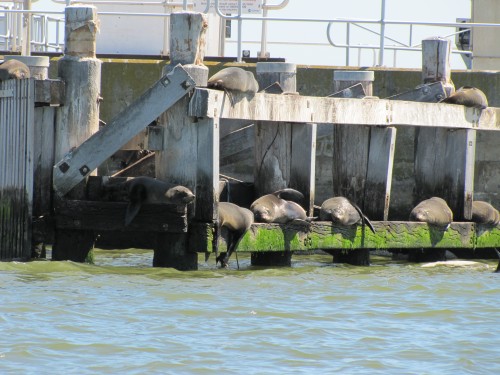It looks like a blue gum
I just had to stop and take a photo of this special tree in the Mt Annan Botanic Gardens in Sydney. Many of the trees in Australia are in the eucalyptus family, commonly known as “gum trees”. One group of them is also known as “blue gums”. The staff here in the gardens must have a good sense of humour.
The sign in the foreground explains the message they are trying to get across: “Dead trees provide beautiful homes with perfect views.”
Collectively, the gum trees of Australia provide homes for countless numbers of creatures. A single large tree – like the one in the photo – can be home to many species of insects, beetles, spiders, lizards as well as birds, bats, possums and many others. The trees provide shelter, roosting spots, nesting sites, nesting hollows, food and perching spots.
On the down side, millions of dead, mature trees like the one in the photo, have been chopped down for building materials, railway sleepers, firewood and for fence posts. Even a dead tree can provide a home for many creatures, especially if the tree has good nesting hollows. Owls and parrots especially like these hollows, and so do possums and bats. While large stands of mature trees do remain, the popularity of open fires and slow-combustion fires has accelerated the demise of many older dead trees.
Disclosure: I must confess to liking a wood fire myself, and so I am in a small way probably guilty of destroying some of these beautiful old trees. To partially lessen my guilt, only yesterday we arranged for a heating consultant to inspect our home to advise us on alternative methods of heating. Installing a reverse cycle air conditioner is the way to go, powered largely by our solar panels on the roof.
Cattle Egrets and a little donkey
During our visit to Ethiopia last December we hired a driver to take us through some of the rural areas north of Addis Ababa. We drove just over 100 kilometres to a locality known as Portuguese Bridge. On the way we only stopped once so the opportunities for birding were minimal and photography quite difficult.
The above shot was one taken as we were travelling along in the mini bus at about 90kph. It shows a typical rural scene in that part of the country. My attention was focussed on the birds in the scene, a small flock of Cattle Egrets feeding in the paddock. (Click on the image to enlarge.) Cattle Egrets seemed quite common in the areas we travelled in rural Ethiopia. Later we found this also to be true of Morocco and Spain.
A short distance further on we saw the small donkey shown below pulling an enormous load of grass. These amazing little beasts of burden are obviously very strong. Donkeys are common throughout this part of Ethiopia. Even in the city drivers must be on the lookout for them everywhere.
Beware – the hazards of birding
I went for my morning walk before breakfast today. I generally follow the same route along a side road next to our property. The birding was quite good, despite the cool, overcast conditions. It was threatening to rain and I actually felt a few drops as I walked along.
Near the end of my route where I turn around and retrace my steps home I saw a dead Brown Snake on the road. It had been reasonably warm the day before, so I guessed that was when it came to grief. Although it’s not a busy road, large trucks come long it several times a day so it’s possible that one of them ran over it.
Although it is only a few weeks into spring, the snakes are on the move – and probably hungry after their winter hibernation. Brown Snakes are relatively common around here but they tend to keep out of our way by choice, so we only ever see one or two every year, usually dead specimens like the one I saw this morning.
The photo above is of an Inland Taipan (I think I read the label correctly) taken yesterday on our family visit to the Cleland Wildlife Park near Adelaide. The Brown Snake found around here is somewhat similar in appearance. Both are quite venomous so I treat any encounter with caution.
More than once I’ve almost stepped on a snake while birding, and on one infamous occasion actually had one slither over my boot. Now that’s observing our wildlife just a little too closely.
Just so my loyal readers are not disappointed, I’ve included a photo of some birds taken yesterday.
That’s not a bird
Sydney Trip Report June 2011
We had a very comfortable cabin at the Lake Talbot Tourist Park, Narrandera, on our journey home. Next morning I found out that we’d had a free-loader – someone sleeping in the gutter of the roof outside (see photo above). I gave him a gentle prod with a broom and found out that we’d had a Brush-tailed Possum sleeping just outside our cabin.









